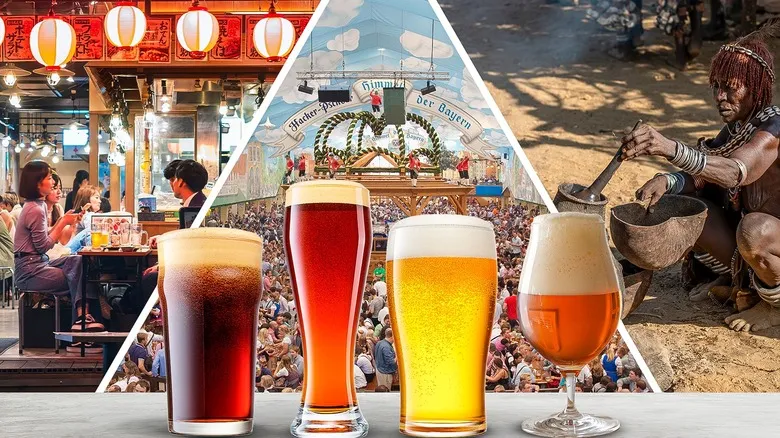Germany hosts its iconic Oktoberfest each year
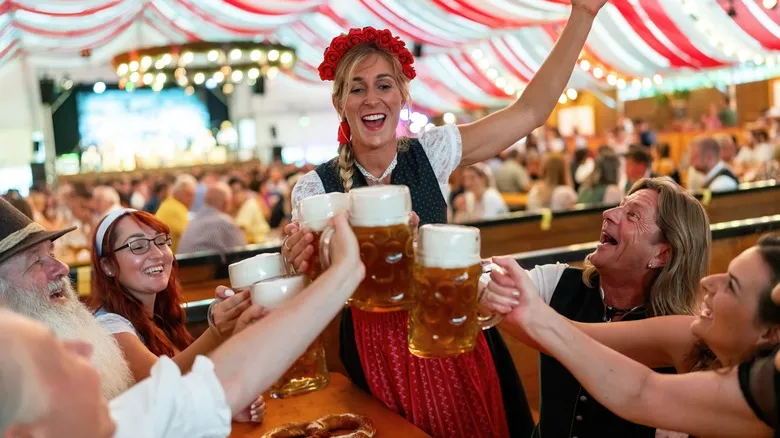
What would a listicle about beer-drinking traditions be without a nod to Germany's renowned Oktoberfest? Each autumn, Munich hosts a two-week celebration of its rich culture and customs, featuring everything from bratwurst to folk music. However, the highlight of the event is undoubtedly the emphasis on beer. Nearly seven million attendees flock to Oktoberfest every year, consuming an equivalent amount of beer in liters. Festival-goers can sample various types of Oktoberfest brews from six esteemed breweries, all of which have kegs ready to be tapped.
Before the festivities can kick off, though, there's a ceremonial moment that marks the official beginning of the festival. This tradition involves the mayor of Munich using a hammer to tap the first keg while exclaiming "It's tapped!" in Bavarian, followed by a gun salute that signals the start of the celebration. From that point on, it's time to raise your glasses!
Chile holds its own annual beer festival

Germany isn't the only nation to celebrate with a beer-themed festival. Inspired by this tradition, Chile has launched its own annual events. Among the many options, one of the standout attractions is The Bierfest, which takes place in Valdivia. This festival features a diverse selection of beer specialties provided by Kunstmann Brewery. The festivities kick off with a lively parade along the Valdivia River, complete with music and beautifully decorated horse-drawn carriages.
The following four days are packed with excitement, offering a vibrant, drink-focused agenda. Attendees can enjoy various contests, dances, and even beer showers. However, two segments of the festival that visitors simply cannot miss are the barrel tapping and the coronation ceremony. On the first day, the mayoress and the founders of Kunstmann Brewery tap a beer barrel, showering the crowd with its contents as a gesture of hospitality. Another highlight of Bierfest Kunstmann is the crowning of the festival's king and queen. Representatives from participating institutions compete in a series of challenges, and the winners are crowned royalty. Their prizes include not only a donation to their institution but also a year’s supply of free beer. Who wouldn’t want to compete for that?
Students in the United States drink for a full day
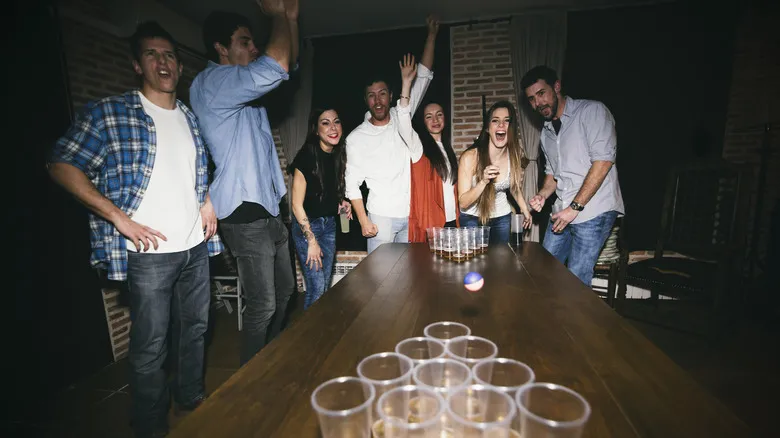
The United States offers plenty of occasions to enjoy a drink throughout the year, from Cinco de Mayo and St. Patrick's Day to New Year's Eve and Mardi Gras. Additionally, there are lesser-known celebrations like National White Wine Day and Bloody Mary Day. Beer has its own designated days as well, with one notable event originating in Lewiston, Maine. While Lewiston may not be the first place that comes to mind for beer enthusiasts, every year, typically in early February, students at Bates College partake in Newman Day, where they challenge themselves to consume 24 cans of beer in 24 hours. Princeton University has also participated in this trend in the past.
Newman Day is named after actor Paul Newman and is inspired by a quote, which is supposedly and questionably attributed to him: "24 beers in a case. 24 hours in a day. Coincidence? I think not." However, Newman himself expressed his disapproval of the event, even writing a letter to Princeton urging them to discontinue it. Despite this, students have embraced it as a cherished tradition. One can only speculate how they manage to meet this spirited challenge—likely involving two of America's favorite beer-related pastimes: beer pong and flip cup.
South Africans share beer from a communal clay pot
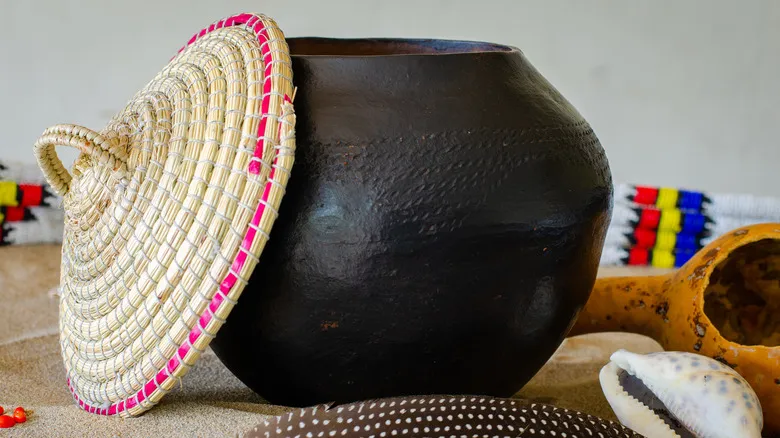
Beer is often enjoyed simply for the pleasure it brings, alongside its flavor, but in South Africa, it carries a much deeper significance. In this Rainbow Nation, beer is intertwined with the cultural values of its people. The Zulu, the country's largest ethnic group, traditionally store their beer in clay pots. These pots serve as a means for the living to connect with their ancestors during significant ceremonies, including burials, weddings, and births.
The ritual of drinking from these vessels is equally meaningful. The woman who brews the beer starts by pouring a portion onto the ground next to the pot, allowing the spirits of the ancestors to partake first. Following this, the hostess kneels and drinks from the pot in front of her guests to signify its safety. Guests then drink in order of their status, typically sharing directly from the communal pot. Throughout this entire process, everyone is required to be seated or squatting.
Peruvians take turns drinking in beer circles

Whether you realize it or not, there’s a skill to pouring beer properly. Tilt your bottle at the right angle, and you’ll notice a delightful surge of frothy bubbles in your glass. While this may not matter to everyone, in Peru, that light and airy foam holds a significant place in their drinking culture. It receives particular attention during the Peruvian beer circle tradition.
As the name suggests, this custom involves participants forming a circle. It starts with one person purchasing a large bottle of beer to share with the group. The buyer pours the beer into a small glass. After filling it, they drink the contents in one go while the next person holds the remaining bottle. Once finished, the initial drinker flicks any foam from the glass onto the ground and promptly hands the empty glass to the next person. This process continues until everyone in the circle has had their turn. The cycle can be repeated as many times as desired.
Respect must be maintained when drinking in Japan
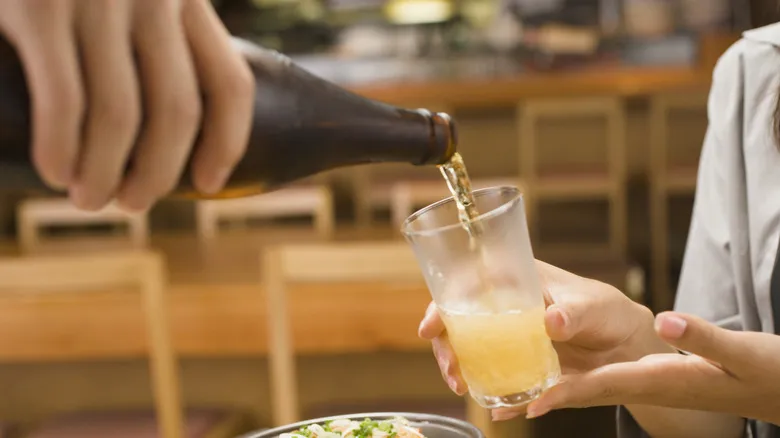
Japan is credited with the creation of beverages like Sake and Shochu, but interestingly, the most popular alcoholic drink in the country is actually beer. In 2022, Japan ranked 10th out of 170 countries in beer consumption. Given the significant role alcohol plays in fostering social and business relationships in Japan, it’s no surprise that there are traditions associated with beer drinking.
In Japan, maintaining composure and respect while enjoying beer is essential. When sharing drinks with a group, the first round should always feature the same beverage, which is typically beer. It’s important to never pour your own drink; instead, it’s a gesture of respect to pour for others, starting with elders or those in higher positions. Additionally, when receiving a drink from someone older, it’s polite to hold the cup with both hands as a sign of appreciation.
Chugging beer is a birthday tradition in New Zealand
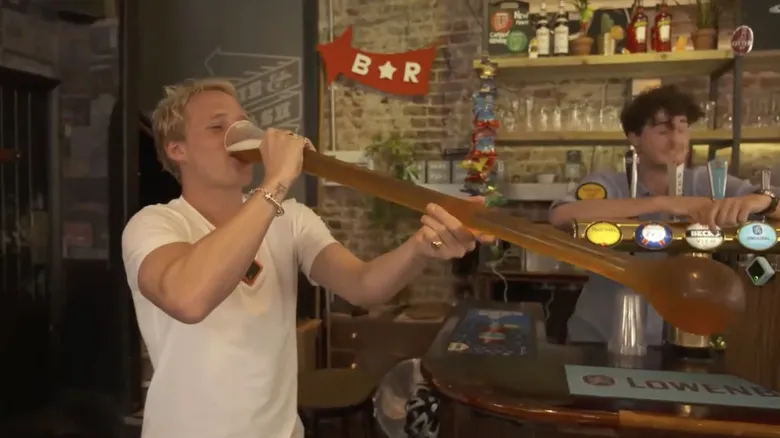
Have you ever thought about the best type of glass for enjoying ale? For New Zealanders, the only appropriate choice for consuming any kind of beer is a yardie—especially when celebrating a 21st birthday. This tradition is seen as a rite of passage, where those marking their entry into adulthood are expected to quickly down beer from a tall, narrow yard-long glass. The New Zealand version of these glasses typically holds over two liters of liquid.
Naturally, that's a significant amount of beer to consume in one go. Given the potential dangers of binge drinking and the risk of developing unhealthy habits, some individuals choose to skip this challenging tradition. However, for many others, drinking from a yardie remains a cherished custom that continues to be embraced by young adults today.
Keep your eyes locked and arms ahead of you when drinking in Czech Republic
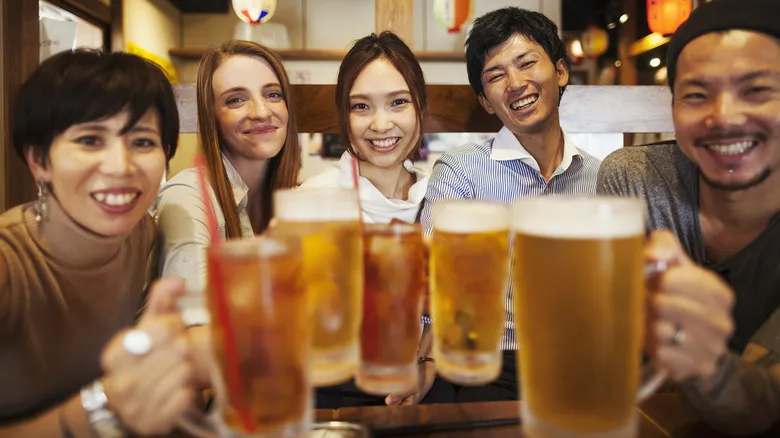
In many parts of the world, clinking glasses and offering a brief toast while drinking is a popular way to connect with those around you. It undeniably fosters a sense of camaraderie and connection. However, in the Czech Republic (and much of Europe), there's a small gesture that can enhance the experience even further: maintaining eye contact during the toast. Failing to do so may unintentionally convey disinterest in your companions.
While it's important to make eye contact with your drinking friends, be sure not to cross arms with anyone while toasting. Only clink glasses with those directly across from you, as intertwining arms is thought to bring bad luck—specifically, it could spell disaster for your love life, leading to seven years of misfortune in the bedroom. So whether you're enjoying lager or ale, it's wise to keep your eyes wide open and your arms extended in front of you.
Recommended
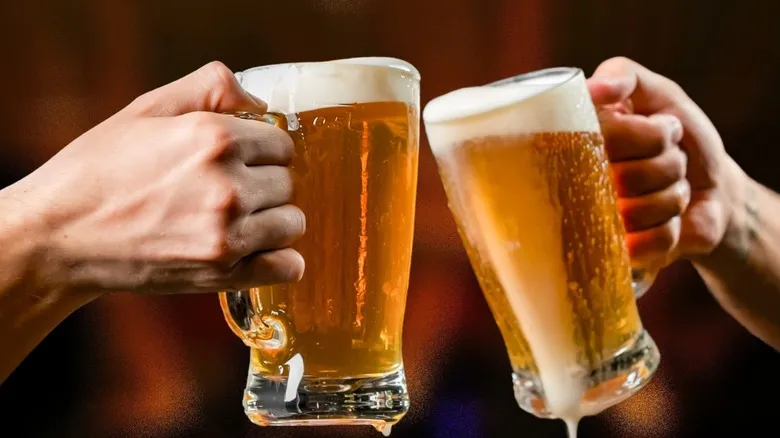
Lager Vs Pilsner Beers: What's The Difference?
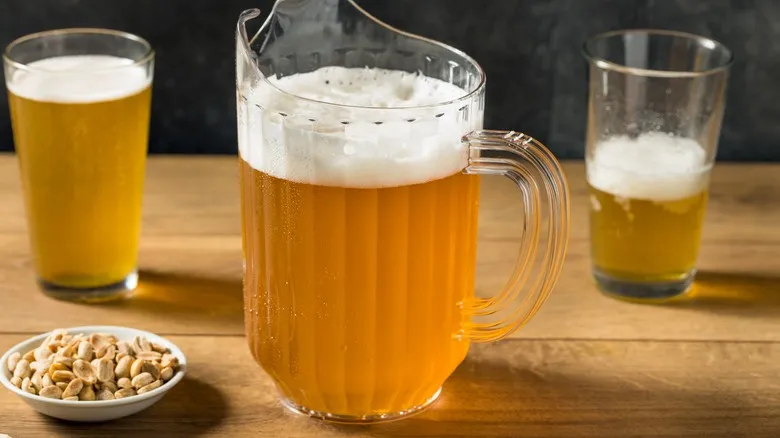
How Many Beers Are Typically In A Pitcher?
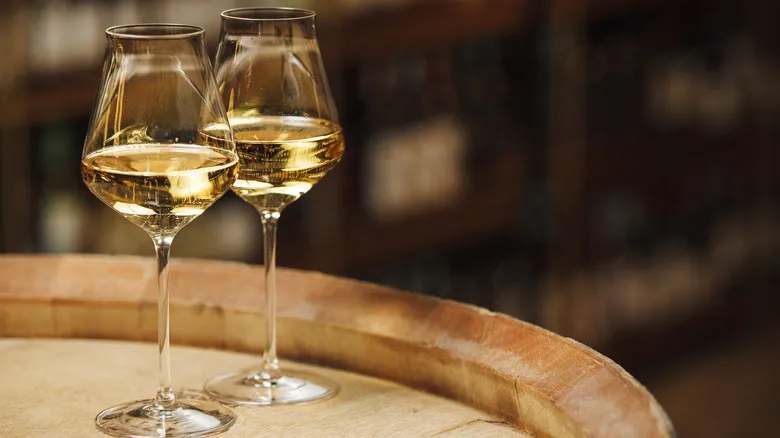
Wait, Not All Wine Is Vegan?
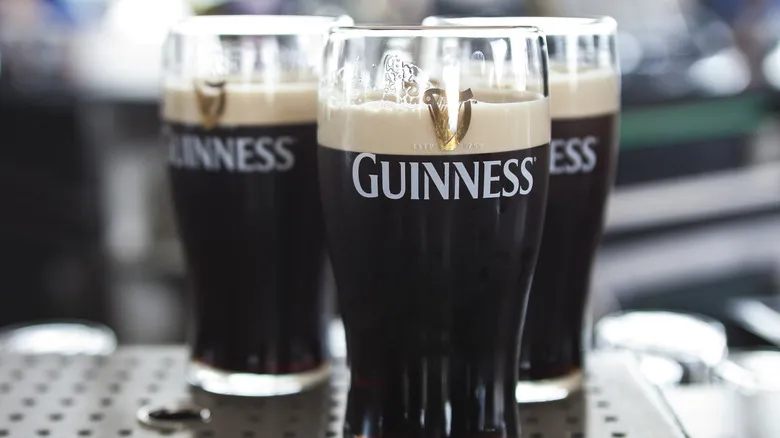
The Ideal Temperature To Drink Guinness At (And Why It Takes 24 Hours)
Next up

